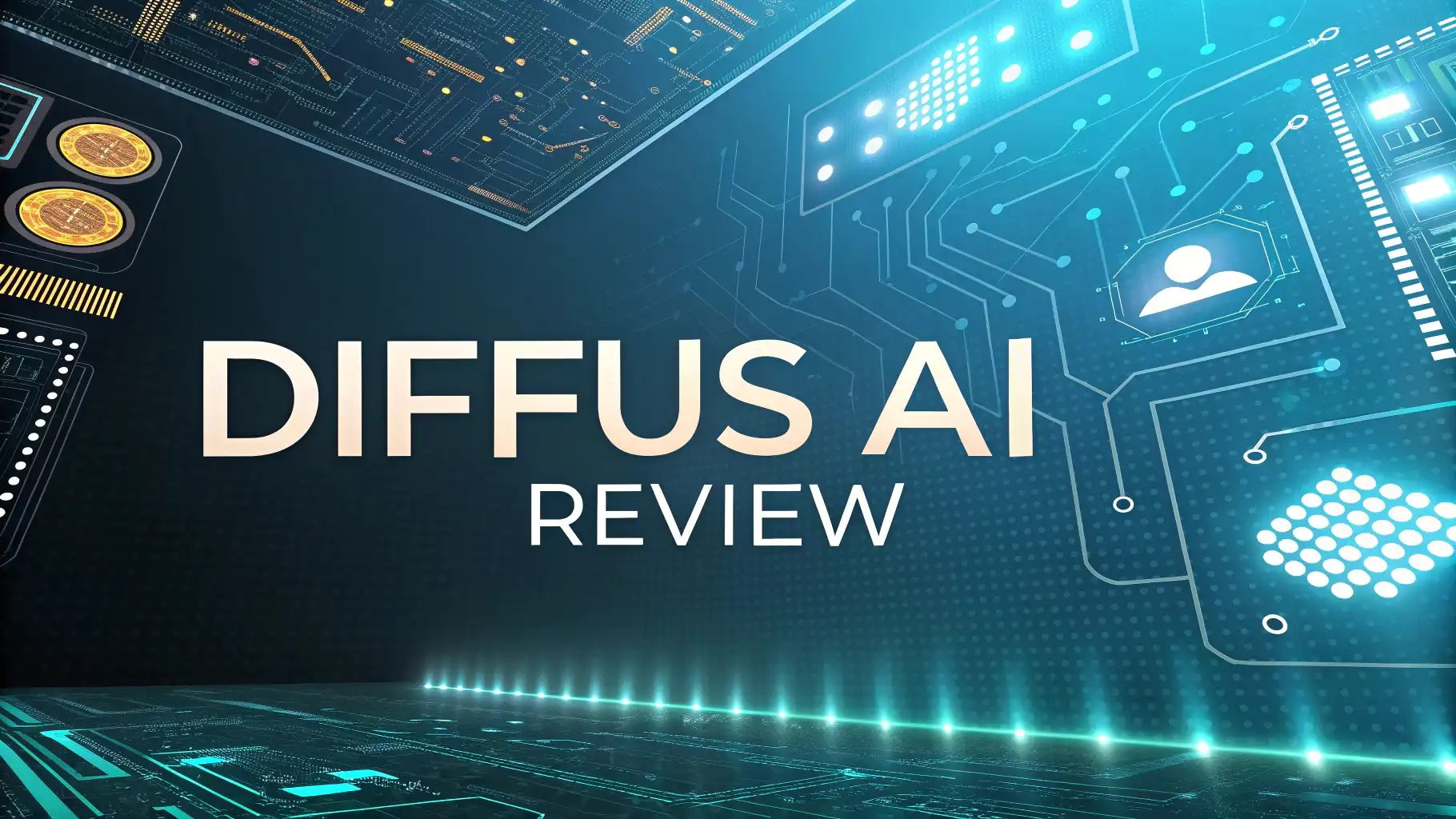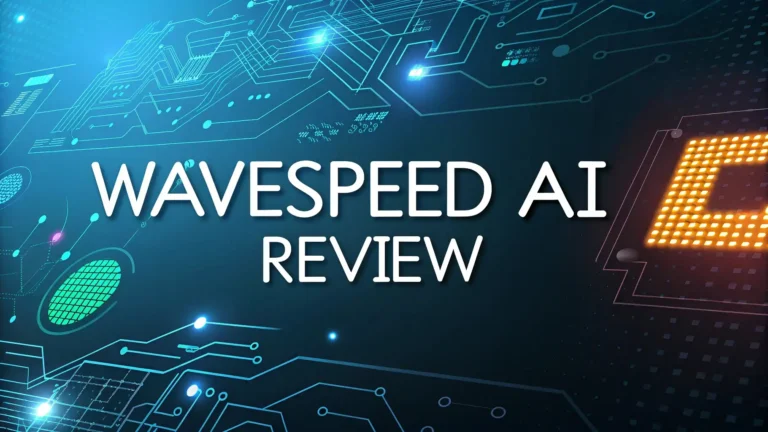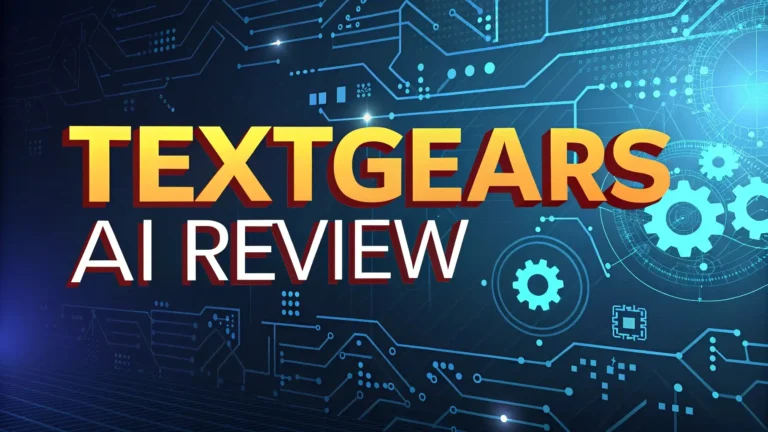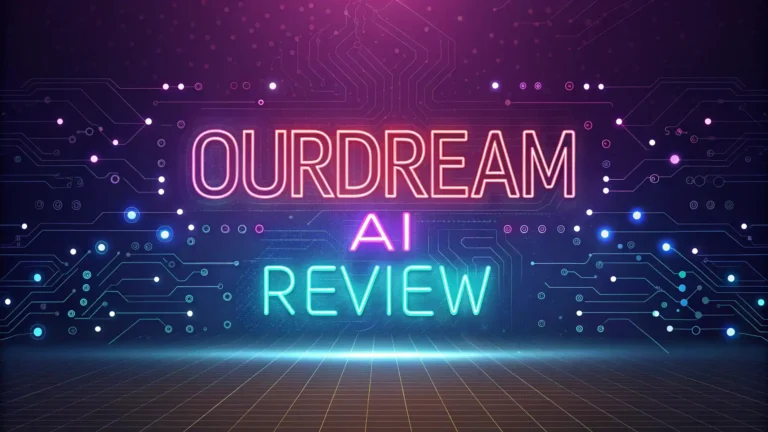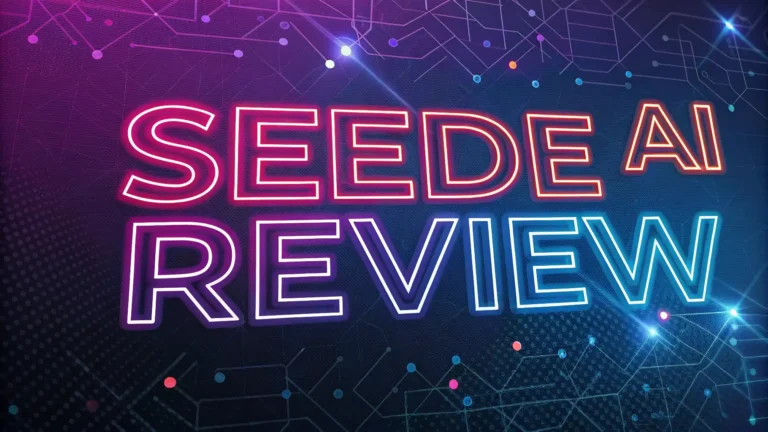Diffus AI Review 2025: Professional AI Image Generation
AI image generation has transformed the creative landscape dramatically over the past few years. In 2025, professionals and hobbyists alike have an impressive array of tools at their disposal.
Among these tools, Diffus AI stands out as a powerful platform that combines an extensive model library with professional controls and browser-based accessibility.
Today we take a deep dive into Diffus AI and explore what makes it a top choice for creators in 2025. By the end of this comprehensive review, you will know if Diffus AI is the right tool for your creative needs and professional requirements.
Key Takeaways
- Diffus AI provides access to over 70,000 AI models for image generation, including checkpoints, Loras, and embeddings
- The platform is completely browser-based, requiring no expensive GPU hardware or complex setup
- Diffus offers professional-grade tools like ControlNet, Face Swap, and Inpaint for precise creative control
- The platform features four subscription tiers ranging from $1/month to $48/month with varying credit allowances
- Users praise the platform for its vast model selection and intuitive interface that works for both beginners and professionals
- The service delivers high-resolution outputs suitable for professional printing and commercial use
- Diffus AI has shown significant speed improvements in 2025 compared to earlier versions
- The platform supports advanced features like HiRes.fix for enhanced image quality
- Private storage options are available for securing your generated content
- Some users report occasional loading delays during peak usage times
- The platform receives regular updates with new models and features
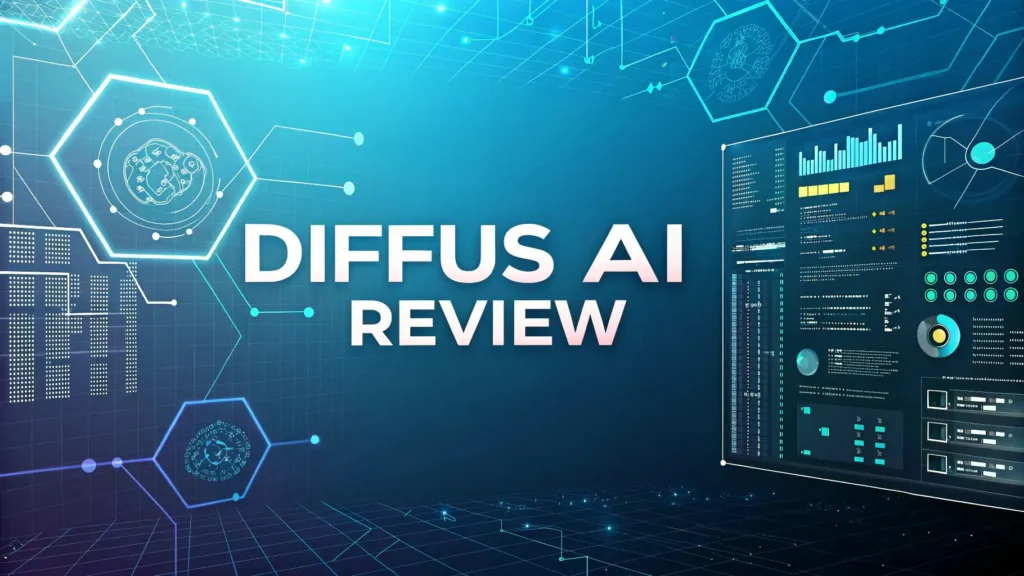
What Is Diffus AI?
Diffus AI is a professional browser-based platform built for AI image generation. Launched as a cloud solution for running Stable Diffusion models, Diffus AI has evolved into a comprehensive creative tool that gives artists and designers the power to generate stunning visuals without requiring specialized hardware.
The core appeal of Diffus lies in its accessibility combined with professional capabilities. Unlike many competitors that require powerful computers with expensive GPUs, Diffus runs entirely in your browser. This approach democratizes access to advanced AI image generation, making it available to creators regardless of their hardware specifications.
Diffus positions itself as a professional tool rather than just another image generator. The platform focuses on providing granular controls, extensive model options, and output quality that meets commercial standards. This professional focus is evident in both its feature set and pricing structure.
The Technology Behind Diffus AI
At its core, Diffus AI leverages diffusion models, a type of generative AI technology that has revolutionized image creation. These models work by progressively adding random noise to an image and then learning to reverse this process to generate new images based on text prompts.
The platform primarily uses Stable Diffusion architecture but extends its capabilities through a vast library of specialized models. These include base models (checkpoints), style adapters (Loras), and concept embeddings that allow for highly specific outputs tailored to particular aesthetic styles or content types.
What makes Diffus AI stand out technically is its cloud-based implementation of these models. The company maintains powerful server infrastructure that handles the computationally intensive process of image generation, freeing users from hardware constraints. This approach also allows Diffus to offer concurrent job processing, with higher-tier subscriptions supporting up to 32 simultaneous generation tasks.
Key Features of Diffus AI in 2025
Vast Model Library
The most impressive feature of Diffus in 2025 is its library of over 70,000 models. This extensive collection includes:
- Base Checkpoints: Foundation models with different specializations (photorealistic, anime, artistic, etc.)
- Loras: Style adapters that can be applied to modify outputs toward specific aesthetics
- Embeddings: Concept-specific additions that help the model understand particular subjects
This massive library gives creators unprecedented flexibility to find exactly the right model for their specific needs. Whether you need photorealistic portraits, fantasy landscapes, product visualizations, or abstract art, Diffus likely has multiple models optimized for your specific use case.
Professional Controls
Diffus separates itself from basic AI image generators through its comprehensive set of professional controls. These include:
- ControlNet: Allows precise control over composition, pose, and structure
- Inpainting: Enables selective regeneration of specific image areas
- Face Swap: Facilitates replacing faces in generated images
- HiRes.fix: Produces high-resolution outputs with enhanced detail
These tools give professionals the fine control necessary for commercial work, moving beyond the hit-or-miss approach of simpler generators. The ability to iterate and refine specific aspects of an image makes Diffus suitable for professional workflows where precision is essential.
Browser-Based Accessibility
Perhaps the most practical advantage of Diffus is its complete browser-based operation. This approach offers several benefits:
- No hardware requirements beyond a basic computer and internet connection
- Access from anywhere without installing software
- Automatic updates with no maintenance required
- Cross-platform compatibility across Windows, Mac, Linux, and even tablets
This accessibility has made Diffus particularly popular among professionals who work across multiple devices or locations. The freedom from hardware constraints means designers can generate images while traveling or working remotely without sacrificing quality.
User Interface and Experience
Diffus AI features a clean, intuitive interface that balances powerful features with usability. The platform organizes its workflow into logical steps that guide users through the generation process:
- Model Selection: Choose from thousands of specialized models
- Prompt Creation: Describe your desired image with text
- Parameter Adjustment: Fine-tune settings like resolution, sampling method, and steps
- Enhancement: Apply professional tools to refine the output
The interface follows modern design principles with clear organization and visual feedback. Controls are grouped logically, with advanced options hidden until needed to prevent overwhelming new users.
One particularly strong aspect of the Diffus experience is its prompt system, which includes intelligent assistance to help users craft effective descriptions. This system helps bridge the gap between what users imagine and what the AI needs to understand, resulting in more accurate outputs.
Performance and Speed
Performance has seen significant improvements in the 2025 version of Diffus. The platform now delivers faster generation times compared to earlier versions, with standard images typically completing in 10-30 seconds depending on complexity and resolution.
Higher-tier subscriptions benefit from priority processing that reduces wait times during peak usage periods. The platform also supports batch processing for efficiently generating multiple variations of the same prompt.
Some users still report occasional loading delays when first accessing the platform or when switching between different models. However, these delays are generally brief and have been reduced compared to previous years.
The maximum task duration varies by subscription tier, ranging from 3 minutes for the basic Teaser plan to 60 minutes for Plus and Pro plans. This longer duration for premium tiers allows for more complex and higher-resolution outputs.
Pricing and Subscription Options
Diffus AI offers a tiered pricing model that scales with usage needs:
Teaser Plan ($1/month)
- 30 credits per day
- Maximum 3 minutes per task
- No private storage
- Limited extension access
Basic Plan ($12/month)
- 3,000 credits per month
- Maximum 30 minutes per task
- 5GB private storage
- Up to 8 concurrent jobs
- Advanced extension access
Plus Plan ($24/month)
- 18,000 credits per month
- Maximum 60 minutes per task
- 20GB private storage
- Up to 16 concurrent jobs
- Video extension access
Pro Plan ($48/month)
- 40,000 credits per month
- Maximum 60 minutes per task
- 40GB private storage
- Up to 32 concurrent jobs
- Finetuning extension access
This graduated structure makes Diffus accessible to casual users while providing sufficient resources for professionals. The credit system offers flexibility in how resources are allocated, allowing users to choose between many simple generations or fewer complex ones.
The addition of private storage in all paid tiers addresses privacy concerns and makes the platform suitable for commercial work where confidentiality is important.
Image Quality and Output Options
Diffus AI produces exceptionally high-quality images that meet professional standards. The platform supports resolutions up to 2048×2048 pixels (with higher resolutions possible using specialized techniques), providing sufficient detail for most commercial applications.
Output quality depends significantly on the selected model and parameters. Diffus excels at:
- Photorealistic portraits with natural facial features
- Detailed landscapes with consistent lighting and perspective
- Product visualizations with accurate textures and materials
- Stylized illustrations with coherent artistic elements
The platform supports multiple output formats including PNG, JPG, and WEBP. Images retain metadata about the generation parameters, making it easy to reproduce or refine successful results.
A particularly strong point is the platform’s HiRes.fix feature, which enhances detail and clarity in final outputs. This two-stage process first generates a base image, then refines it at higher resolution with additional detail, resulting in print-ready quality.
Community and Model Sharing
One of Diffus AI’s strengths is its active creator community. The platform allows users to:
- Discover models created by other community members
- Share successful prompts through a gallery system
- Find inspiration from featured artworks
- Connect with other creators through integrated forums
This community aspect creates a collaborative ecosystem that accelerates learning and creativity. New users can study successful techniques from established creators, while experienced users can showcase their work and build a following.
The model sharing system is particularly valuable, as it continuously expands the available options beyond what the Diffus team provides officially. This organic growth of the model library keeps the platform fresh and relevant to evolving creative trends.
Comparing Diffus AI to Competitors
In the 2025 AI image generation landscape, Diffus competes with several established platforms. Here’s how it compares to major alternatives:
Vs. Midjourney: Diffus offers more granular control and a larger model library, while Midjourney provides a more streamlined experience with generally consistent quality. Diffus requires more technical knowledge but rewards it with greater flexibility.
Vs. DALL-E: Diffus produces more detailed and customizable outputs, while DALL-E excels at conceptual understanding and coherence. Diffus gives users more direct control over the generation process, while DALL-E aims for simplicity.
Vs. Locally-Run Stable Diffusion: Diffus eliminates hardware requirements and maintenance headaches but comes with subscription costs. Local setups offer unlimited usage without ongoing fees but require technical setup and powerful hardware.
Vs. RunDiffusion: Both offer cloud-based approaches, but Diffus provides a larger model library while RunDiffusion focuses on speed and simplicity. Diffus caters more to experienced users who want maximum control.
The key differentiator for Diffus remains its combination of professional controls, vast model selection, and browser-based accessibility. This balance makes it particularly attractive to creators who need power without hardware investments.
Use Cases and Applications
Diffus AI serves diverse professional applications:
Graphic Design and Illustration
Designers use Diffus to generate concept art, illustrations, and visual elements for commercial projects. The platform’s precise controls and high-resolution outputs make it suitable for creating assets that can be incorporated into larger design projects.
Product Visualization
Marketers and product teams leverage Diffus to create product mockups and promotional visuals. The ability to specify exact compositions and styles helps maintain brand consistency while exploring creative variations.
Content Creation
Content creators utilize Diffus to produce engaging visuals for blogs, social media, and publications. The speed of generation allows for rapid creation of multiple options to support content calendars.
Character and Environment Design
Game developers and animators employ Diffus to develop character concepts and environment designs. The platform’s style adaptability makes it useful for exploring visual directions before committing to full production.
Fine Art
Artists increasingly incorporate Diffus into their practice, using it to explore new aesthetic directions or as a starting point for mixed-media works. The ability to train custom models allows artists to develop unique visual languages.
Limitations and Drawbacks
Despite its strengths, Diffus AI has several limitations worth considering:
Learning Curve
The platform’s extensive options can overwhelm new users. The power of Diffus comes with complexity that requires time to master, particularly for optimal prompt crafting and parameter tuning.
Resource Consumption
The credit-based system limits total output, especially on lower tiers. Heavy users may find themselves running out of credits before the month ends, requiring careful resource management or additional purchases.
Occasional Performance Issues
Some users report intermittent slowdowns during peak usage times. While generally reliable, the cloud-based nature of the service means users occasionally experience delays when servers are under heavy load.
Content Restrictions
Like all AI image generators, Diffus maintains content policies that restrict certain types of outputs. These restrictions are necessary for legal and ethical reasons but may limit some creative applications.
Limited Animation Capabilities
While the platform has begun offering video features in higher tiers, these capabilities remain less developed than the core image generation. Users needing extensive animation will likely need additional tools.
The Future of Diffus AI
Looking ahead, Diffus appears positioned for continued evolution in several directions:
Enhanced Video Generation
The platform has begun expanding into short-form video generation, with more advanced capabilities likely coming to higher subscription tiers.
Customization and Training
The Pro tier already offers some model finetuning capabilities, and this area is expected to grow, allowing users to train models on their specific visual styles or brand requirements.
Workflow Integration
Future updates will likely focus on better integration with professional creative tools like Photoshop, Illustrator, and industry-specific software.
Collaborative Features
The platform is expanding its team-oriented features to better support studios and agencies with multiple users collaborating on projects.
API Expansion
Diffus has begun offering programmatic access for developers, suggesting a future where the platform’s capabilities can be embedded in custom applications and workflows.
How to Get Started with Diffus AI
Getting started with Diffus is straightforward:
- Create an account on the Diffus website
- Choose a subscription tier based on your needs
- Explore the model library to find options aligned with your goals
- Start with simple prompts before advancing to complex parameters
- Experiment with different models to understand their strengths
- Join the community forums to learn from experienced users
- Review tutorials provided by Diffus and community members
New users should expect a learning period of several weeks to become proficient with the platform’s advanced features. Starting with the Basic tier provides sufficient resources to explore while keeping costs reasonable during this learning phase.
Is Diffus AI Worth It in 2025?
The value proposition of Diffus depends on your specific needs:
For Professional Creators: Diffus is absolutely worth it if you regularly need high-quality AI-generated images. The control, quality, and model variety justify the subscription cost, especially when compared to the hardware investment required for local alternatives.
For Casual Users: The Teaser plan at $1/month provides an affordable entry point, but casual users might find free alternatives sufficient unless they specifically need Diffus’s model variety or quality.
For Teams and Studios: The higher-tier plans with increased concurrent jobs and storage make Diffus a cost-effective solution for creative teams producing multiple assets regularly.
For Developers: The emerging API options make Diffus an interesting platform for building custom applications that incorporate AI image generation.
The browser-based nature of Diffus makes it particularly valuable for users who work across multiple devices or lack access to high-end computing hardware.
Conclusion
Diffus AI stands as one of the most comprehensive and powerful AI image generation platforms available in 2025. Its combination of vast model selection, professional controls, and browser-based accessibility creates a unique value proposition for creators at all levels.
While the platform does require a learning investment to master fully, the results justify the effort for those who need quality AI-generated imagery. The tiered pricing structure makes it accessible to casual experimenters while providing sufficient resources for professional production work.
As AI image generation continues to evolve, Diffus has positioned itself at the intersection of accessibility and professional capability, making it a significant player in the creative technology landscape of 2025. Whether you’re a designer seeking to enhance your workflow, an artist exploring new mediums, or a content creator needing visual assets, Diffus AI offers a compelling solution worth considering.
Frequently Asked Questions
What hardware do I need to run Diffus AI?
Diffus AI runs entirely in your browser, requiring only a computer with internet access. No specialized GPU or high-end hardware is needed since all processing happens on Diffus’s cloud servers.
How does the credit system work in Diffus?
Credits are consumed based on the complexity and resolution of your generations. Simple images at lower resolutions use fewer credits than complex, high-resolution outputs. Different subscription tiers provide different monthly credit allowances.
Can I use images created with Diffus AI commercially?
Yes, Diffus allows commercial use of generated images under most subscription plans. However, you should check the specific terms of service for any limitations, particularly regarding sensitive content or specific industries.
How does Diffus AI compare to running Stable Diffusion locally?
Diffus eliminates the need for powerful hardware and technical setup but requires a subscription. Local Stable Diffusion offers unlimited generations without ongoing costs but demands technical knowledge and suitable hardware. Diffus also provides instant access to thousands of models without downloading multi-gigabyte files.
Can I upload my own models to Diffus?
Higher-tier subscriptions allow for private model uploads and storage. This feature lets you use custom-trained models or specialized models not included in the public library.
Does Diffus AI support ControlNet and other advanced features?
Yes, Diffus supports advanced features like ControlNet, Inpainting, Face Swap, and HiRes.fix across most subscription tiers, with more specialized extensions available in higher tiers.
How many images can I generate with Diffus each month?
The number varies by subscription tier and the complexity of your generations. The Basic plan includes 3,000 credits, which typically translates to hundreds of standard images per month, while the Pro plan with 40,000 credits can support thousands of generations.
Can I collaborate with team members on Diffus?
While Diffus does not currently offer formal team accounts, higher-tier subscriptions support multiple concurrent jobs and private storage that can facilitate team workflows. More robust collaboration features are expected in future updates.
Is there a mobile app for Diffus AI?
Diffus operates through web browsers and does not currently offer dedicated mobile apps. However, the web interface is responsive and works on tablets and mobile devices with sufficient screen size.
What happens to my images if I cancel my subscription?
Images stored in your private storage may become inaccessible if you downgrade to a tier with less storage or cancel your subscription. It’s recommended to download important images to your local storage regularly.

